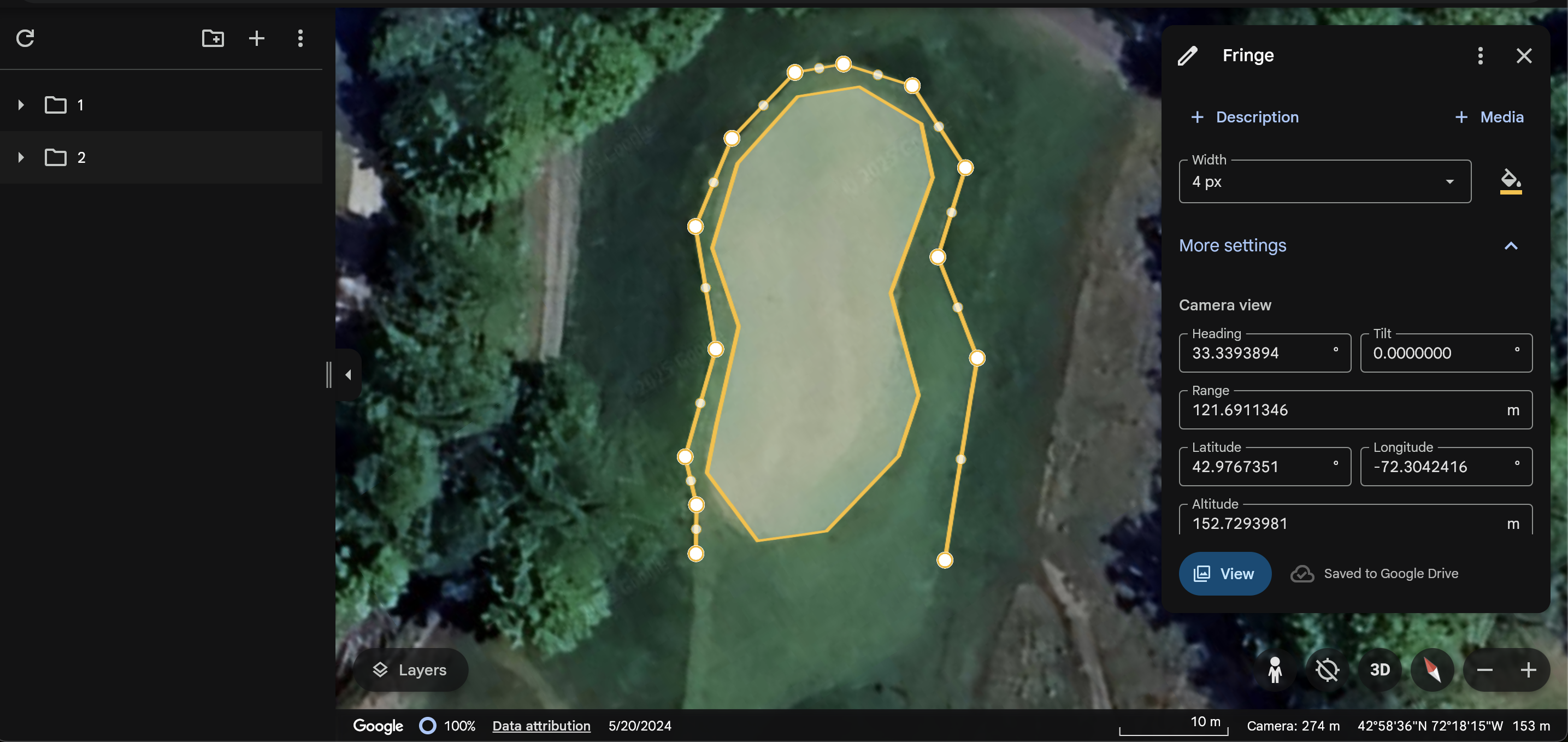Google Earth to Inkscape

My process for golf yardage book creation process has been consistent over last 10 years. A few format changes, here and there. Nothing major. Working on Pin Sheet Pro has yielded a possible change to that.
Current Process
Currently, Google Earth (desktop version) is used for obtaining the top-down visual data. Navigating to the golf course in question, screenshots are taken of each hole.
The screenshots are then imported into Inkscape. Once in Inkscape, fairways, greens, and tee boxes are traced by creating paths.
Back in Google Earth, distances from tee boxes to hazards are measured. Those distances are then drawn in Inkscape.
Separately, the green complex is placed onto a grid (5 yards per cell) and adjusted.
The yardage book template contains multiple files. Each file contains a template for specific holes in order to support easy printing and binding.
Optimization
The copy-paste of the raster image from Google Earth to Inkscape has always been a pain. The new version of Google Earth (web version) supports drawing of paths directly in the client. Google Earth isn’t a complete vector edting solution, however. We still need to get that data into Inkscape.
Enter: Keyhole Markup Language (KML). Projects in Google Earth are exportable via the KML format. All path information is included.
Inkscape’s native format is Scalable Vector Graphics (SVG). It does not support importing KML files out of the box. Luckily, there is a plugin that enables importing of KML files. I wasn’t able to find information on the author of the plugin, but it’s freely available via GitLab and worked in my testing.
Tracing in Google Earth
Creating all of the pathing inside of Google Earth has a few advantages. The first is speed. Not having to stop between each hole - and even between fairways and greens - allows a flow state.
Additionally, projects in Google Earth can be collaborated on. Multiple people can contribute to the process of mapping out the golf course.
Lastly, the project within Google Earth can be saved in Google Drive. Handy for archival purposes and sharing.